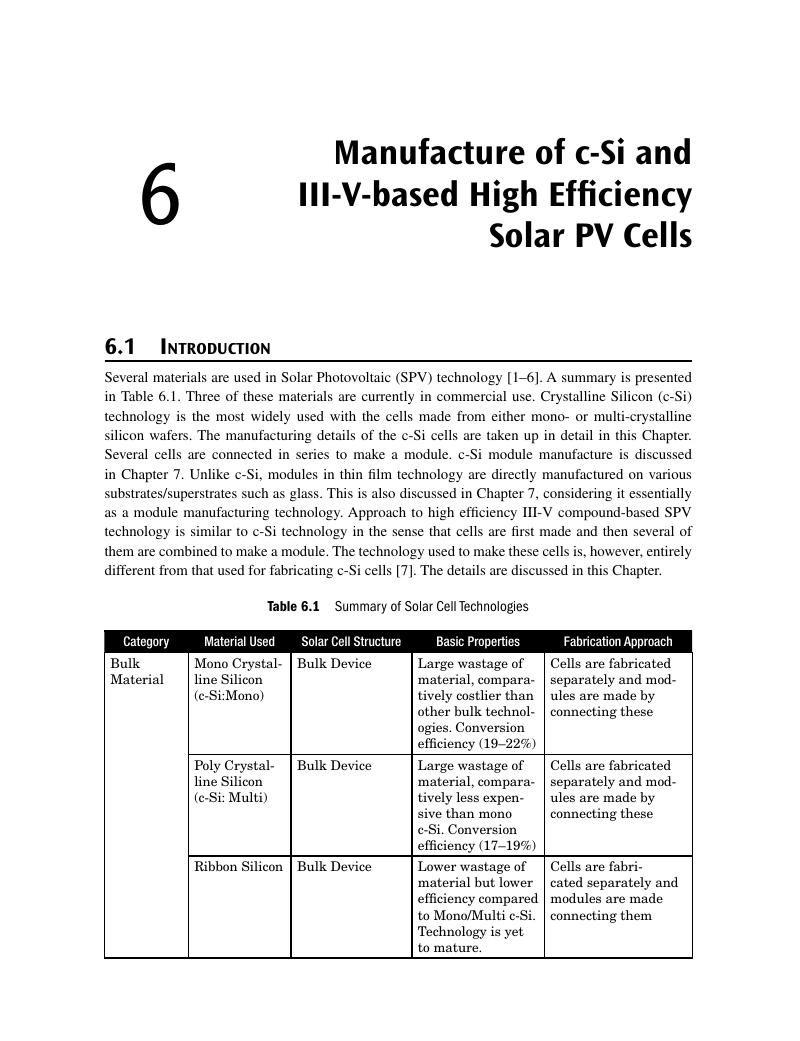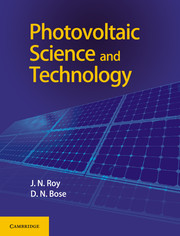Book contents
- Frontmatter
- Dedcation
- Contents
- Figures
- Tables
- Preface
- Acknowledgments
- 1 Introduction to Solar Energy and Solar Photovoltaics
- 2 Crystalline Silicon Cells
- 3 Thin Film Solar Cells
- 4 III-V Compound, Concentrator and Photoelectrochemical Cells
- 5 Organic and Polymer Solar Cells
- 6 Manufacture of c-Si and III-V-based High Efficiency Solar PV Cells
- 7 Manufacture of Solar PV Modules
- 8 Characterization, Testing and Reliability of Solar PV Module
- 9 Overview of Solar PV System Technology and Design
- 10 Design and Implementation of Off-Grid and On-Grid SPV Systems
- Index
- References
6 - Manufacture of c-Si and III-V-based High Efficiency Solar PV Cells
Published online by Cambridge University Press: 05 July 2018
- Frontmatter
- Dedcation
- Contents
- Figures
- Tables
- Preface
- Acknowledgments
- 1 Introduction to Solar Energy and Solar Photovoltaics
- 2 Crystalline Silicon Cells
- 3 Thin Film Solar Cells
- 4 III-V Compound, Concentrator and Photoelectrochemical Cells
- 5 Organic and Polymer Solar Cells
- 6 Manufacture of c-Si and III-V-based High Efficiency Solar PV Cells
- 7 Manufacture of Solar PV Modules
- 8 Characterization, Testing and Reliability of Solar PV Module
- 9 Overview of Solar PV System Technology and Design
- 10 Design and Implementation of Off-Grid and On-Grid SPV Systems
- Index
- References
Summary

- Type
- Chapter
- Information
- Photovoltaic Science and Technology , pp. 158 - 202Publisher: Cambridge University PressPrint publication year: 2017



